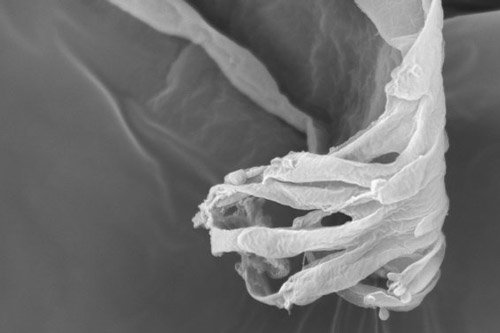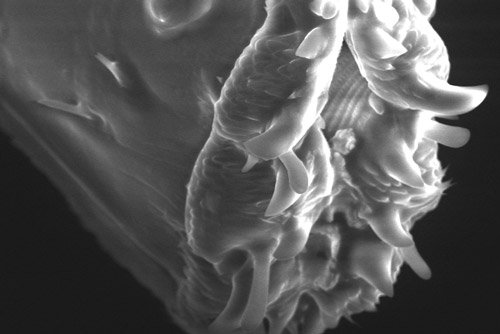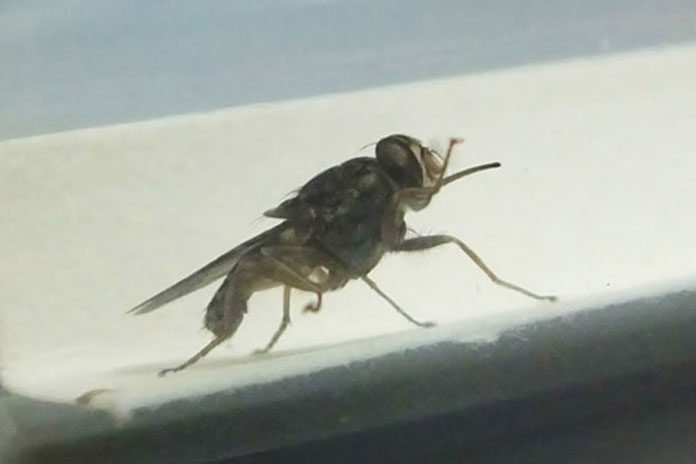African Tsetse Fly, a large biting flies that inhabit much of tropical Africa. They have been extensively studied because of their role in transmitting disease. Now, scientists at the University of Bristol taking a close-up look at the biting mouthparts of Tsetse fly.
In the study, scientists used a new high-powered scanning electron microscope. Through this, they were able to see the rows of sharp teeth and rasps that the fly uses to chew through the skin when it bites.

Wendy Gibson and Maggie Gamble; specimen prepared by Lori Peacock and Gini Tilly, Wolfson Bioimaging Facility
They found that the fly’s tooth tears the delicate blood capillaries in the skin through which the fly devour the blood. And to avoid blood clotting, the fly squeeze saliva into the wound through a narrow tube inside the. Their saliva contains anti-coagulant that prevents blood clotting.
Under the microscope, scientists observed beak from male and female flies. They found that the tip of the tube has intricate finger-like structures with suckers.

Image: Wendy Gibson and Sally Hobson, University of Bristol. LSB environmental SEM
Professor Wendy Gibson from the School of Biological Sciences said, “This was an unexpected finding. The textbooks just show a plain pointed end to the saliva tube.”
“We’ve no idea yet what this ornate structure is for. We haven’t come across anything like it in other bloodsucking insects such as midges and mosquitoes.”
“The narrow tube that delivers saliva to the wound site, ends in a remarkably ornate and complex structure with around ten finger-like projections, each adorned with sucker-like protrusions, contradicting previous descriptions that show a simple, beveled end like a hypodermic needle.”
“The function of the finger-like projections is speculative; they appear to be flexible and may serve to protect the hypopharynx from the influx of blood or microorganisms, or control the flow of saliva.”
